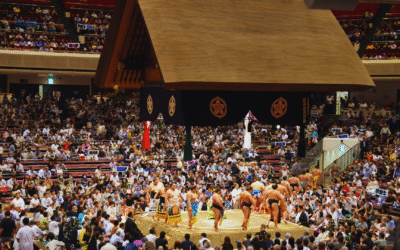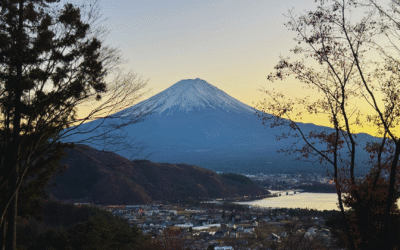Planning a trip to Japan? We’ve got you covered! If you haven’t already, make sure to check out our comprehensive guide on the 60+ travel tips for Japan to get started. Now, let’s zoom in on Hakone, a picturesque region known for its hot springs, stunning natural scenery, and cultural treasures.
Why should Hakone be on your must-visit list in Japan? It’s simple: the area’s breathtaking landscapes, soothing hot springs, and rich historical sites create an unforgettable experience. Hakone offers a perfect blend of nature, relaxation, and cultural exploration, making it an ideal destination for tourists seeking a unique and serene adventure in Japan.
Whether you’re soaking in an onsen with a view of Mount Fuji, exploring the artistic wonders at the Hakone Open-Air Museum, or cruising on Lake Ashi, Hakone’s diverse attractions ensure that every visitor finds a unique and memorable experience.
Let us give you the insider tips and essential info you need to navigate this serene retreat like a pro. So, buckle up and get ready to dive into the must-know Hakone travel tips that will make your trip unforgettable!
Top 26 Hakone Travel Tips
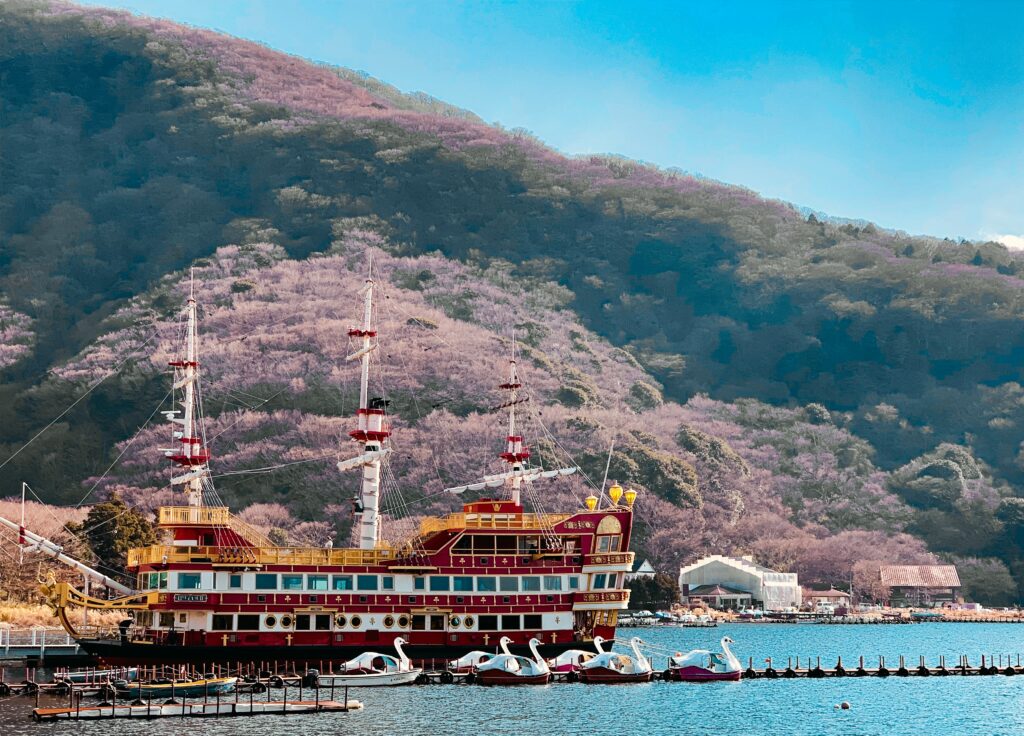
Travel Planning Tips
Before diving into the nitty-gritty of Hakone travel tips, let’s take a moment to set the stage. Planning a trip to such a tranquil and scenic area can be overwhelming, but don’t worry—we’ve got your back.
Tip #1: Book accommodations in areas that best suit your interests and purpose for travel.
- Efficient Explorers: Consider staying in the vicinity of Hakone-Yumoto station for a seamless travel experience in Hakone. This bustling area not only provides easy access to transportation hubs but also boasts a myriad of shops, restaurants, and amenities within walking distance.
- Luxury Seekers: Elevate your Hakone experience by indulging in upscale ryokans nestled along Lake Ashi. These refined accommodations not only offer luxurious amenities and impeccable service but also provide breathtaking views of the serene lake and surrounding mountains. Immerse yourself in traditional Japanese hospitality with lavish kaiseki meals, soothing hot spring baths, and elegant tatami-floored rooms.
Tip #2: Book accommodations early—especially during peak seasons like cherry blossom season, Golden Week, autumn, and winter. Each of these seasons has its unique draw but brings with it a higher number of visitors.
- Cherry Blossom Season (late March to early April): The blooming of cherry blossoms is a celebrated event across Japan. In Hakone, spots like Gora Park and the shores of Lake Ashi become especially crowded with both tourists and locals enjoying hanami (flower viewing parties).
- Golden Week (late April to early May): This is a series of four national holidays within one week and one of Japan’s busiest holiday seasons. Many residents take paid time off during this period, leading to packed trains, hotels, and tourist spots.
- Autumn Foliage (mid-November to early December): Similar to the cherry blossom season, autumn brings stunning colors to Hakone’s many gardens and parks. Popular spots for viewing autumn leaves, including the Hakone Botanical Garden and the Hakone Open-Air Museum, can be very packed.
- Winter (late December to late March): Hakone tends to be a popular winter destination as the area’s abundant calming hot springs offer the perfect respite from the chilly frigid temperatures.
Tip #3: Try to plan your visit during the least crowded and cheapest months:
- June (Rainy Season): Fewer tourists and generally lower prices can be expected due to the rainy weather, making it a quieter time to enjoy Hakone.
- Summer (July to August): Although it’s hot, the summer months tend to be less crowded compared to spring and autumn, potentially offering more comfortable pricing and accommodation options.
Tip #4: Download Google Maps – if you haven’t already. Google Maps is highly reliable and accurate in Japan. It provides real-time information on train schedules, platform numbers, and the best routes to your destination.
Tip #5: Work in—at least some of—the must-visit sites we mention in our Hakone Itinerary. Some of my personal favorites are:
- Hakone Open-Air Museum: Stroll through this incredible museum that blends art with nature. It’s a unique experience that’s both free and enriching.
- Hakone Shrine: Located on the shores of Lake Ashi, this iconic shrine offers a serene atmosphere and beautiful surroundings.
- Owakudani: Experience the volcanic activity and stunning views at this fascinating geological site. Try the famous black eggs and enjoy the unique landscape created by sulfurous fumes.
Tip #6: Hakone is known for its hot springs, so be sure to add that to your must-do things in the area! Better yet, get the quintessential Hakone experience by enjoying a hot spring bath with a view of Mount Fuji, perhaps at Hotel Green Plaza—among Flip Japan Guide’s recommended day-use onsens in Hakone.
Tip #7: Plan for a Hakone loop course. The Hakone loop course is a popular way to see the best of Hakone. It typically includes taking the Hakone Tozan Railway, the Hakone Cable Car, the Hakone Ropeway, a cruise on Lake Ashi, and the Hakone Tozan Bus. This loop allows you to experience various transportation modes and see different scenic spots.

Tip #8: Beyond the popular tourist spots, Hakone is home to numerous hidden nature gems and cultural experiences. If you’re excited to explore these unique places and activities, Flip Japan’s Travel Planning services can arrange everything for you.
Area Tips
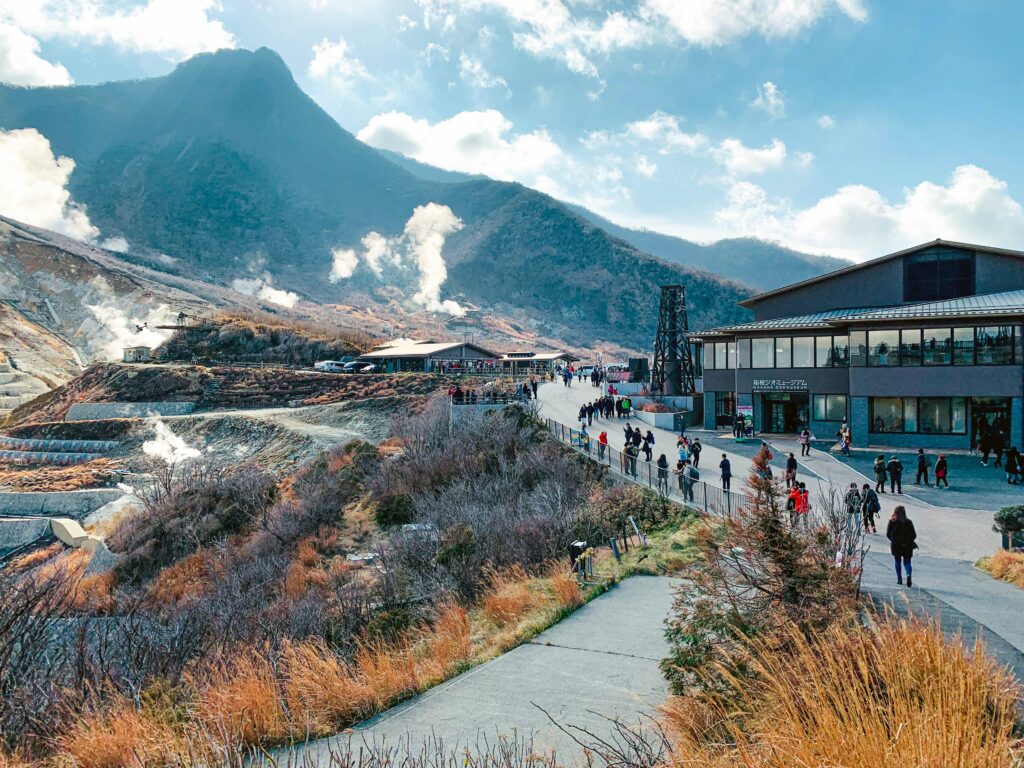
Hakone is a region with numerous areas, each offering its own unique vibe and attractions. Here are some tips on must-visit areas and hidden gems that will help you make the most of your Hakone adventure.
Tip #9: Consider visiting some of the area’s most famous spots and tourist favorites.
Even if you’re not a fan of crowds, these incredibly popular spots are worth a visit for various unique reasons:
- Lake Ashi: Known for its scenic cruises and views of Mount Fuji. Be sure to check out the Hakone Sightseeing Cruise for a picturesque experience.
- Owakudani: Famous for its volcanic activity and black eggs cooked in the hot springs. The area offers stunning views and a unique geological experience.
- Hakone-Yumoto: The gateway to Hakone, renowned for its hot springs and numerous traditional inns.
- Hakone Ropeway: Take a ride for breathtaking views of the region, including Mount Fuji on clear days.
Tip #10: If you want some more lesser-known and local neighborhoods, consider checking out:
- Miyanoshita: A historical area known for its classic ryokans and charming atmosphere.
- Sengokuhara: Known for its beautiful pampas grass fields and the Little Prince Museum.
Tip #11: Don’t miss out on visiting Odawara when going to or leaving from Hakone. Odawara is home to the historic Odawara Castle, where you can immerse yourself in Japan’s rich history. Additionally, take some time to explore the vibrant local seafood markets for a taste of fresh, regional delicacies.
Tip #12: Be mindful that while Hakone and Kawaguchiko might seem geographically close, traveling between them via public transportation can be quite challenging. If you plan to visit both locations, consider our services to help you book special private transportation and ensure a smooth and enjoyable trip.
Culture and Etiquette Tips

Hakone’s diverse neighborhoods each have their own unique vibe and social norms. Here are some tips to help you navigate the cultural landscape:
Tip #13: Though it is, of course, not a requirement for tourists, you can blend in more easily by dressing and behaving more conservatively in these formal areas:
- Hakone-Yumoto: This upscale hot spring area is where people tend to be more formal. Dress neatly and be mindful of your manners.
- Shrines and Temples: When visiting places like Hakone Shrine, dress modestly and follow all posted rules.
Tip #14: Good manners are always a requirement when traveling, but you can let your hair down a bit more in these more casual and youthful areas:
- Gora: Known for its relaxed atmosphere and artistic vibes.
- Sengokuhara: With its natural beauty and museums, this area has a more laid-back feel.
Tips Related to Transportation and Getting Around
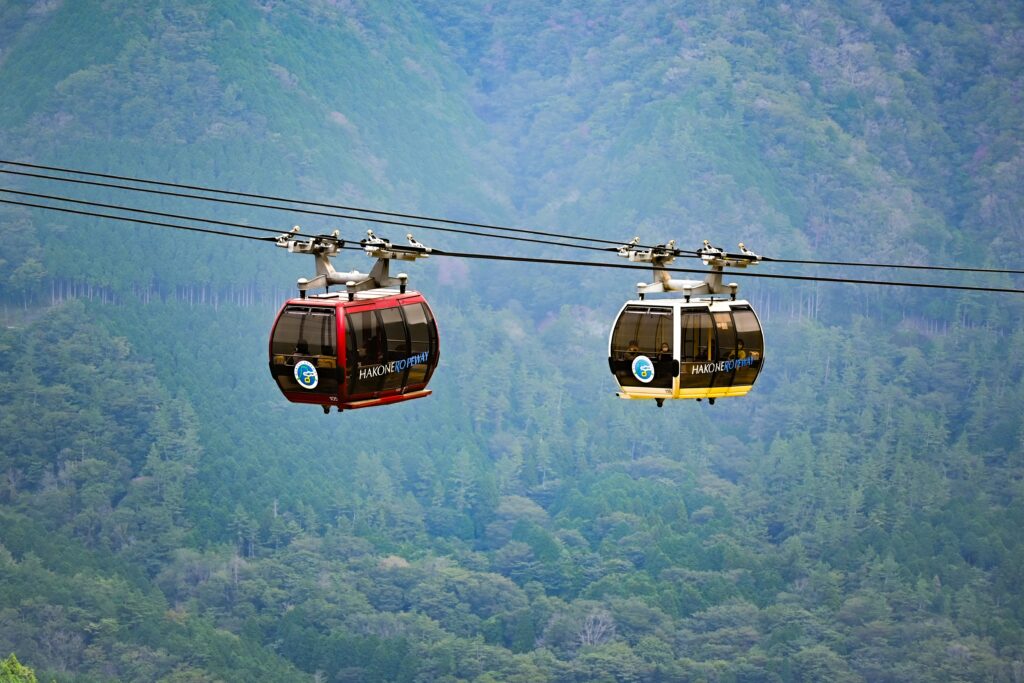
Hakone can be an overwhelming area for first-time visitors due to its vast size, but with the right preparation and a few practical tips, you can navigate the area’s transportation with ease and confidence.
Tip #15: One of the first things you should do when you arrive in (or even before you go to) Hakone is to get a Hakone Free Pass.
The Hakone Free Pass is an invaluable tool for anyone visiting the Hakone area. Here are the details you need to know:
- Who Can Avail of It: The Hakone Free Pass is available to both domestic and international tourists. It is perfect for travelers who plan to explore Hakone extensively and want the convenience of unlimited transportation.
- Pricing: The pass is available in two durations:
- 2-Day Pass: ¥5,000 for adults and ¥1,000 for children (if departing from Odawara). Prices vary slightly based on the departure station and if there are any ongoing promotions.
- The Hakone Free Pass offers unlimited access to various forms of transportation in the Hakone area, including:
- Odakyu Line: One return trip between your departure station and Odawara Station.
- Hakone Tozan Railway: Between Odawara and Gora.
- Hakone Tozan Cable Car: Between Gora and Sounzan.
- Hakone Ropeway: Between Sounzan and Togendai.
- Hakone Sightseeing Cruise: On Lake Ashi.
- Hakone Tozan Bus and Hakone Checkpoint Shuttle: Throughout the Hakone area.
- Odakyu Highway Bus and Tokai Bus: Designated areas.
- Additional Benefits: The pass also provides discounts on entry fees to various attractions, museums, and hot springs within Hakone, as well as special offers at around 70 tourist spots.
- Where to Purchase:
- Online: The most convenient way to purchase the Hakone Free Pass is online through the Odakyu Electric Railway website or other authorized travel websites. Buying online allows you to avoid queues and ensure you have the pass ready upon arrival. Visit EMot for online purchases.
- Odakyu Line Stations: You can purchase the pass at major Odakyu Line stations, including Shinjuku Station and Odawara Station.
- Convenience Stores: 7-Eleven stores (via 7-Ticket) and multifunction copiers in stores.
- Odakyu Travel Stores: Various Odakyu Travel stores.
- Hakone Tozan Railway Stations: Ticket vending machines at several stations including Hakone-Yumoto, Gora, and Sounzan.
- Hakone Tozan Bus Offices: Various information centers and sales offices in Hakone.
For more details about the Hakone Free Pass, be sure to visit their official website.
Tip #16: Try not to get caught up in the tourist rush hours, which typically fall between 9:00 AM and 11:00 AM in the morning, and from 3:00 PM to 5:00 PM in the evening. Use Google Maps to check real-time schedules and crowd levels.
Tip #17: Also know in advance that these specific transportation lines and stations can get crowded:
- Hakone Tozan Railway: This scenic railway can get quite crowded, especially during peak seasons.
- Hakone Ropeway: Expect heavy crowds during peak tourist times, especially on clear days when Mount Fuji is visible.
Tip #18: If you do find yourself stuck in a tourist rush, navigate it like a pro by:
- Following the flow of tourists efficiently.
- Standing on the left on escalators to allow others to pass on the right.
- Using alternative routes if your schedule is flexible.
Tip #19: Utilize taxis for short distances and convenience. However, be aware that taxis in Hakone can be hard to get due to the limited number available. If you think you will need a taxi, consider arranging it in advance. Taxis in Hakone are known to be expensive, so they are best used for short distances, late-night travel, or emergencies. Google Maps can provide fare estimates for your journey.
Tip #20: Other than the Hakone Free Pass, other transportation passes you can look into are:
- Fuji Hakone Pass
- Coverage: Includes everything in the Hakone Free Pass plus transportation to the Fuji Five Lakes area.
- Duration and Cost: ¥10,100 (adults) and ¥3,100 (children) for a 3-Day Pass.
- Special Features: Ideal for those wanting to explore both Hakone and the Fuji Five Lakes region, offering access to transportation around Mount Fuji.
- Hakone Kamakura Pass
- Coverage: Unlimited travel between Hakone, Kamakura, and Enoshima. It includes the Odakyu Line from Shinjuku, the Enoden Line, and buses in these areas.
- Duration and Cost: ¥7,520 (adults) and ¥1,480 (children) for a 3-Day Pass.
- Special Features: Perfect for travelers wanting to explore the cultural and historical areas of Kamakura along with Hakone.
These passes cater to different travel needs. The Hakone Free Pass is excellent for in-depth exploration of Hakone, while the Fuji Hakone Pass extends to the Fuji Five Lakes area for a more extensive journey. The Hakone Kamakura Pass adds cultural sites in Kamakura and Enoshima to your itinerary, making it ideal for those interested in history and culture.
Packing Tips
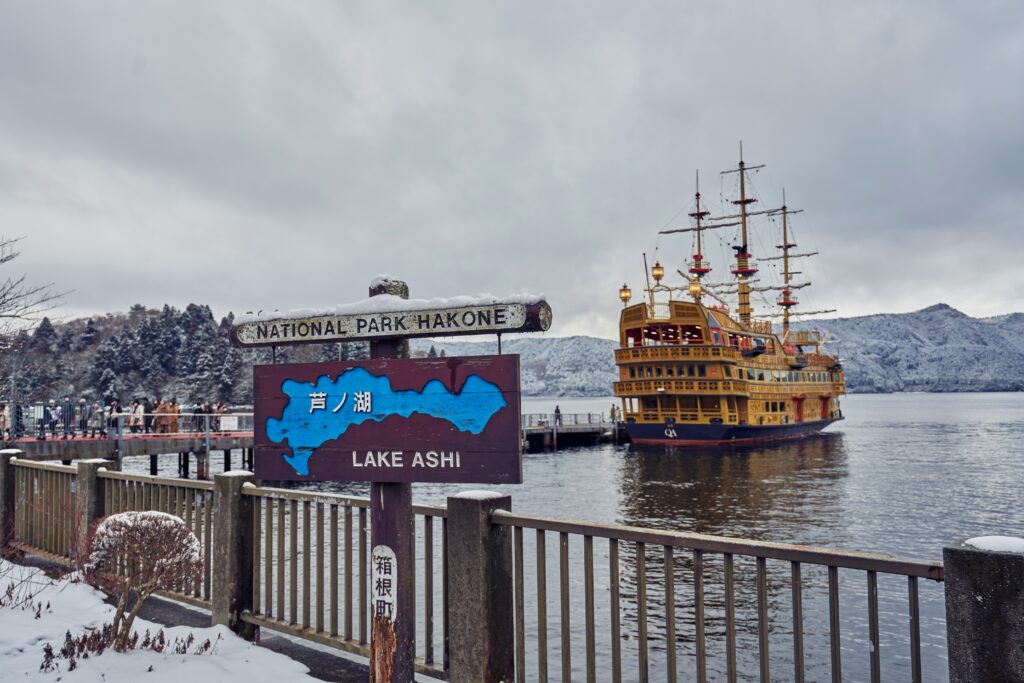
Packing for Hakone requires a bit of strategic planning. In this section, we cover packing tips to ensure you’re well-prepared for your adventure in this scenic area.
Tip #21: Make sure that you pack appropriately for the season.
- Spring (March to May): The weather is mild, but temperatures can vary. Pack layers, such as a light jacket or cardigan. Don’t forget an umbrella or a raincoat, as spring can be rainy.
- Summer (June to August): Summers in Hakone are hot and humid. Bring light, breathable clothing like cotton t-shirts, shorts, and dresses. A portable fan and a hat can also help you stay cool.
- Autumn (September to November): Autumn is pleasant, with mild temperatures. Pack layers to adjust to changing temperatures throughout the day. A light jacket and long sleeves are ideal.
- Winter (December to February): Winters are cold, so bring warm clothing such as sweaters, a heavy coat, gloves, and a scarf. Hakone can get windy, making it feel colder.
Tip #22: Even in summer, transportation in Hakone can be quite chilly due to strong air conditioning. Carrying a cardigan or light sweater in your bag is advisable to stay comfortable.
Tip #23: Sudden rain showers are common in Hakone—especially during the rainy and typhoon seasons—so having a small, foldable umbrella is advisable.
Tip #24: Exploring Hakone is best done by foot, so comfortable walking shoes are a must. Opt for sneakers or cushioned flats. If you plan to visit more formal places like high-end restaurants, pack a pair of dress shoes as well.
However, even at high-end restaurants, casual attire like sneakers and casual clothes are generally acceptable unless specifically mentioned otherwise, so you should not worry about packing a suit.
Tip #25: Most travelers spend one to two nights in Hakone, and lugging around all your baggage can be a hassle. Instead, consider using a luggage transfer service to lighten your load. This way, you can explore Hakone comfortably and stress-free. For more tips on handling your luggage while traveling in Japan, check out our detailed guide.
Tips for After Arriving in Hakone
Arriving in Hakone is an exciting moment, but can also be intimidating. To help you settle in quickly and start your adventure smoothly, here are tips for your first few hours in the area.
Tip #26: Find your way out of Odawara Station and into Hakone with these options:
- Hakone Tozan Railway: This scenic train route runs from Odawara to Gora, passing through beautiful landscapes and offering a charming ride.
- Hakone Tozan Bus: Various bus routes connect Odawara with key areas in Hakone, including Hakone-Yumoto, Lake Ashi, and Gora.
- Hotel Shuttle Bus: Many hotels in the Hakone area offer shuttle buses that transport guests to and from Odawara Station. Check in advance whether the accommodation you’ve booked offers this service.
- Taxis: Taxis are available outside the station. While they offer door-to-door service, they can be more expensive than trains or buses.
Your Hakone Escape Awaits
You’ve now got 26 golden tips to make your Hakone trip a breeze! From the tranquil beauty of Lake Ashi to the relaxing hot springs of Hakone-Yumoto, you’re all set for an unforgettable journey.
But don’t stop here—Japan has so much more to offer! Explore our in-depth guides for Kyoto, Osaka, and even Tokyo to discover more unique experiences and hidden gems.
Hakone is ready to welcome you with open arms. Pack your bags, set your itinerary, and get ready for memories that will last a lifetime. Safe travels!






